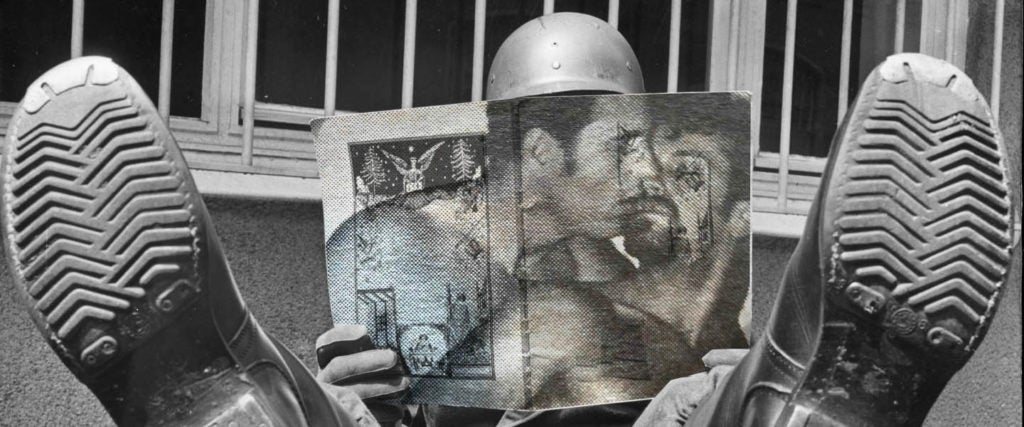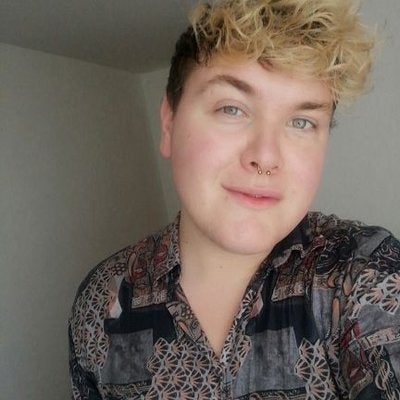For the first two decades of her life, Ellis, a pseudonymous 53-year-old, learned everything she knew about sex from porn. Her self-prescribed sex education taught her every blow-job trick in the book (as well as how to take a facial), but what it didn’t do was teach her about her own sexual pleasure.
Frustration soon gave way to determination, and she spent her mid-20s eagerly devouring any book she could find on female pleasure — particularly the 1972 best-seller The Joy of Sex, an illustrated “gourmet guide” to heterosexual fucking, complete with sketches of bushy-bearded dudes pleasuring their partners.
Ellis’ horny, literature-based quest for sexual improvement isn’t unusual. Often referred to by the science-y name of “sexual bibliotherapy,” it can be loosely defined as the reading of self-help books to overcome key sexual concerns.
It might seem obvious that reading about fucking is an effective way to get better at it, but research has been slowly mounting up to prove it. Dutch academic Jacques van Lankveld has been testing these theories for decades, and a 2012 study found that sexual bibliotherapy helped women with low sexual desire feel more aroused, well-lubricated and orgasmic. Another study published the same year also found that reading a short self-help booklet helped men cope with premature ejaculation, something that watching porn tends to worsen.
This isn’t just because literature tends to be more honest, accurate and instructive than porn — it also has to do with the way that reading affects the brain. Whereas visual porn is often consumed absent-mindedly with a box of tissues and a blinkered desire to cum, reading a book requires time, commitment and dedication, all of which are positively associated with learning and memory recall (and can come in handy when it’s time to put what you learned into action). Watching visual media also tends to worsen communication skills while reading improves them.
Perhaps it’s no surprise, then, that there’s been a growing wave of research-driven sex books cropping up on the market.
Laurie Mintz, a professor of psychology and human sexuality at the University of Florida who’s heard countless stories from students struggling with their own sex lives, recently put these ideas to the test when she and two fellow researchers tasked 92 straight guys with reading “Cliteracy for Him,” a chapter out of her popular book Becoming Cliterate. A crash course on clitoral stimulation geared specifically toward hetero men, it “provides scientific knowledge about female genitalia and refutes commonly held inaccurate beliefs about female sexual functioning,” like that most women orgasm through penetration alone. It also offers suggestions around how to improve communication and enhance female pleasure.
It worked. In a study published last March, Mintz et al showed that their boned-up test subjects accomplished all of the above — improving their understanding of clitoral pleasure, demonstrating less dysfunctional beliefs about female sexuality and becoming better at communication, too. That meant everything from checking in during sex (“How is that for you?”), to chatting more openly before fucking, to figuring out exactly what got their partners off. As per Mintz, these kinds of improvements can be seen as effective antidotes to the “orgasm gap,” a global phenomenon that continues to show that straight women are far less likely to orgasm than their male partners.
Twenty-two-year-old Mike, another pseudonym, discovered how much better reading made sex after he stumbled upon Paul Joannides’ The Guide to Getting It On — a light-hearted, illustrated guide to sexual positions, tips and techniques — during an unconventional encounter with his ex-employer. “Me and my [long-time] girlfriend were actually doing a double date with our old boss and his wife,” Mike recalls. “We found the book in their collection! We all had a good laugh about it, but [our ex-boss] told us that we should definitely read it, so they let us borrow it.”
What started out as “more of a joke than any serious study” has since become a landmark moment in Mike’s relationship. “It was a bit of a surprise to us how intimate an experience it was reading it together,” he tells me. He doesn’t go into specifics, but says that the book has helped to overcome the general awkwardness and anxiety they both used to feel when discussing sex. “It was super nice for us to feel that stress ebb away,” he continues.
Ellis also advocates for the combination of sexy literature and frequent communication. As luck would have it, her aforementioned decision to take sexual bibliotherapy seriously came around the time she met her long-term partner, who also made a habit of reading horny literature in his spare time. “Keep in mind, this is long before the internet,” she reminds me. “So most of his information came from reading Kinsey.”
As well as teaching himself practical tips on getting her off, Ellis’ partner’s openness about his reading habits led to “open conversations about all sorts of things, including my wants, kinks and fetishes.” Basically, because he was interested enough to read about sex, it naturally led to him being more open to discussions that are still sometimes considered taboo, or awkward. “I had been able to give myself a clitoral orgasm, but I didn’t feel confident enough to tell other guys how to go about it. He knew what to do without me telling him anything; it was a wonderful experience to have a guy take care of me like that.”
Tellingly, the orgasm gap all but closes up for queer women, making them way more likely to climax than their straight counterparts. A few have even done the Lord’s work by sharing their orgasm tips in articles and on online forums. But that doesn’t mean queer couples have nothing to learn from sexual bibliotherapy. (Thanks to landmark titles like Juno Roche’s Queer Sex, there are increasingly solid examples of sex-ed written by trans and gender non-conforming horndogs.)
Rosie, a 27-year-old cis queer woman in the U.K., already has a healthy, adventurous sex life. But in addition to vibrators and detailed fantasies, she also turns to sex-ed books on a regular basis to enhance sex with her long-term partner. In fact, she sometimes treats them as horny homework to keep things fresh in the bedroom. “Reading sex books has opened my mind to things I would have never thought about before, and in my relationship, we’ve both read the same books and talked about them afterwards,” Rosie explains. “We’ve even made notes if one of us has read it first, for the other to read later.”
Along those lines, Mintz recalls two students who met against a backdrop of saucy interviews and vulva-shaped cookies at her 2017 book launch, and later hooked up. “I remember that one of them actually wrote me a note,” she says. “He said they started going through the motions — kissing, touching, etc. — and were about to go straight into penetration.” But as he readied himself to start thrusting, the golden rules of cliteracy flashed immediately into his mind, reminding him to slow down, switch gears and consult with his horny partner. The result was a mind-blowing climax for both parties.
Guess it does pay to know every trick in the book.

